Film Inquiry Recommends: Women-Directed Films of the 1980’s
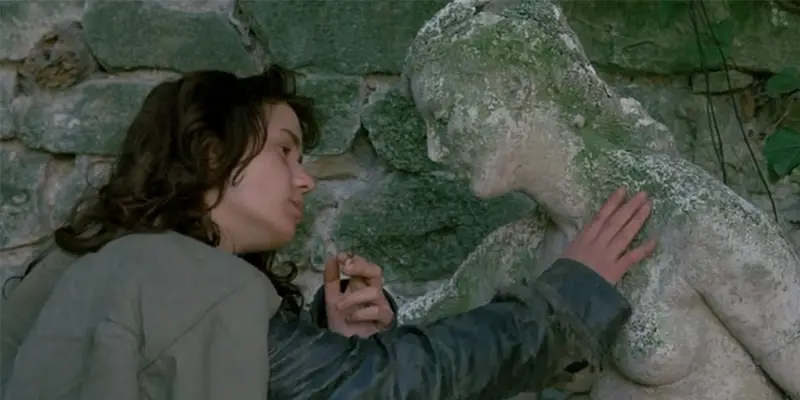
Alex is a 28 year-old West Australian who has a…
Over at our official Facebook page, we are currently posting daily film recommendations, with each week being a different theme. This is a collection of those recommendations! This week’s theme is women-directed films of the 1980’s.
Thanks to the progressive and landscape-shifting times of the 1970’s, the 1980’s was a decade feeling the effects of the aftermath in the changes in the film-making system. Foreign and independent cinema had a hefty impact on Hollywood and mainstream filmmaking, in production and aesthetic ways.
Whilst the success of both Star Wars and Jaws created the blockbuster genre that took attention away from more arthouse/experimentation cinema, there was still small groups of filmmakers pushing the envelope in their personal ways, telling stories in their own unique fashions. Here is a selection of some of the great women-directed films of the 1980’s, just a small pool of the large amount of multi-cultural cinema directed by women that emerged during this confused decade.
1. Fast Times at Ridgemont High (1982, Amy Heckerling)

Throughout her career, Amy Heckerling has managed to make two comedy films which have become cultural touchstones for two different generations – Fast Times at Ridgemont High for the 80’s and Clueless for the 90’s. Alongside these classic films, she has also directed a bunch of commercially successful comedies, such as Loser (which popularised the one-hit wonder, Teenage Dirtbag by Wheatus) and the Look Who’s Talking series, the John Travolta films that he was doing before his comeback via Pulp Fiction.
Heckerling is a director that really understands how to translate relatable, cultural trends of different generations into entertaining films, which means I’m still waiting for her take on the PC-heavy hipster dominated millennial era we are currently experiencing at the moment. Her last film was in 2012, Vamps, the commercially and critically failed vampire film, which was one of the many films that were rushed into production when Twilight was hot.
Fast Times At Ridgemont High is based on Cameron Crowe’s book of the same name, a comedic report of his experiences when going undercover at Clairemont High School in San Diego, California, which formed the basis for most of the characters/stories on-screen. The film follows one year for a series of students at Ridgemont High, with the main students including Stacy Hamilton (Jennifer Jason Leigh) and Mark Ratner (Brian Backer), who both undergo different experiences with love via their older romantic partners. Even with the film’s many subplots, the best known portion of the film is Sean Penn’s iconic stoner character Jeff Spicoli, a carefree, happy-go-lucky surfer who is quietly feuding with his teacher Mr. Hand (Ray Walston), a stoic teacher who is trying to do the best for Jeff.
The film is filled with actors who would go onto become huge stars, from Jennifer Jason Leigh, Sean Penn and cameo appearances from Nicolas Cage (then still going by the name of Nicolas Coppola), Forest Whitaker, Eric Stoltz, Anthony Edwards and much more. The film has gained its cult status by its funny and refreshing screenplay, which takes its teenage characters seriously and has them acting quite naturally, removing any contrived narratives or unnatural dialogue. Heckerling’s confident direction helps, a demonstration of her comedic storytelling that would lead to her highly successful mainstream career. Whilst most people have probably seen this film, if you haven’t, it may be time to check it out.
2. Near Dark (1987, Kathryn Bigelow)
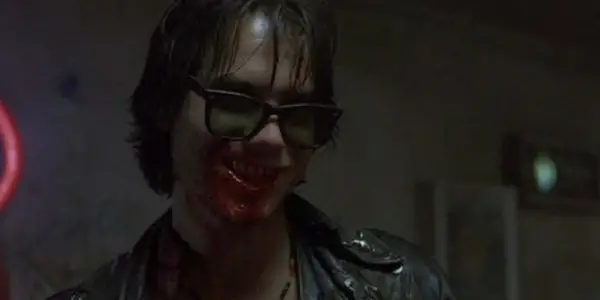
At the moment, Kathryn Bigelow is probably the best known female director, mostly due to her Oscar-winning direction of The Hurt Locker, making her the first (and only) female director to win the Best Director Oscar. Whilst she’s known now for her political films (Zero Dark Thirty, K-19 and The Hurt Locker), Bigelow’s filmography is filled with a slew of strong genre films, which include the sci-fi movie Strange Days, bank heist thriller Point Break (which was immortalised by Hot Fuzz) and this Western/Horror themed Vampire mash-up film – Near Dark.
Caleb Colton (Adrian Pasdar), a loner in a small town, meets the mysterious drifter Mae (Jenny Wright), who share an enchanting night together. The night comes to an abrupt end when Mae bites Caleb and runs away. The next day, Caleb realises that he’s been transformed into a vampire and tracks down Mae for some answers. She invites him to join her travelling group of drifter vampires that includes Severen (Bill Paxton) and leader Jesse Hooker (Lance Henriksen). As Caleb starts to realise the violence and bloodshed that’s associated with being a vampire, he decides that he and Mae need to break free from the violent gang and start a new life together.
Whilst the leads of the film aren’t the most engaging, it doesn’t help that they are severely overshadowed by the terrific performances by the always reliable Lance Henriksen and Bill Paxton, whose violent and psychopathic characters really give the film its off-beat energy. Bigelow successfully mixes the western and horror genres in a modern setting, helped with Tangerine Dream’s very 80’s sounding soundtrack.
The film succeeds by avoiding the usual vampire film tropes, creating a new look/style of vampire that avoids falling into any cliché territory and giving the film a sense of originality. The frequent and heavy bloodshed alongside the practical VFX is also enough to satisfy any genre fan that wants to just watch an old school horror film, Near Dark is one of Bigelow’s best films and one of the better vampire films of the past 30 years.
3. Desert Hearts (1985, Donna Deitch)
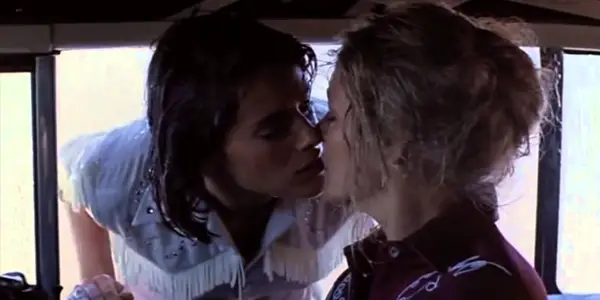
Whilst primarily a TV director, Donna Deitch has directed a few films, one being Desert Hearts, a film well known for its groundbreaking depictions of lesbian relationships in cinema. Due to the subject matter, it took director Donna Deitch four years and eventually selling her home in order to raise the $1.5 million to make the film. The problem she faced after this was finding actors who would be willing to play lesbians in a graphic manner that the film demanded.
She eventually casted Helen Shaver and Patricia Charbonneau, who were both individually warned by their respective agents that doing the film would ruin their careers, both discussions that they withheld from Deitch in order to keep the film going. Deitch’s risks paid off, directing a pioneering and authentic romance film which pushed the boundaries that allowed future filmmakers to explore sexual relationships and love in similar bold ways (an example of one film that was influenced by this work is Blue Is The Warmest Colour).
Set in 1950’s Nevada, professor Vivian Bell (Helen Shaver) has just moved into a guest house ranch for women who are waiting for their divorces to be finalised, owned by Frances Parker (Audra Lindley). There, Bell meets Cay Rivvers (Patricia Charbonneau), the surrogate daughter of Frances, who immediately catches Vivian’s attention due to her care-free attitude and upfront boldness, which clashes with Vivian’s structured and educated background. Realising that they are slowly falling in love with each other, the two struggle to conceal their feelings due to the nature of their relationship and how Parker will feel about the revelations, as the constant secrecy slowly starts to potentially ruin the blooming relationship.
In 1996, The Sydney Morning Herald declared, “Donna Deitch’s 1985 Desert Hearts is widely regarded as one of the best and most significant mainstream fiction films about lesbians”, with the lesbian sex scene frequently rated as one of the best in cinematic history. Deitch commands strong performances out of the two leads, who share genuine chemistry on-screen, which helps sell the intimate romance that is slowly building throughout the film. Even with the film’s important status, it is quite underrated these days, with many people unaware of it completely, which is a shame.
4. Salaam Bombay! (1988, Mira Nair)
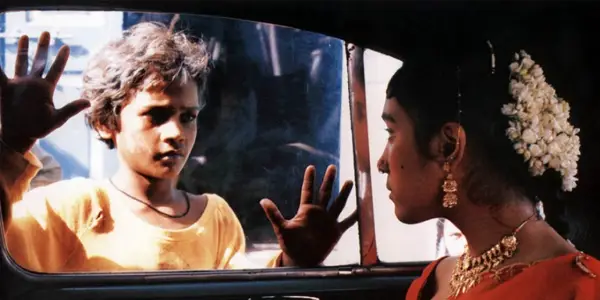
Krishna (Shafiq Syed), in response to his older brother’s constant bullying, sets his brother’s bike on fire. His mother is furious at Krishna for the act, so she drops him off at the local Apollo Circus and tells him that he can only return home once he’s earned the 500 rupees required to fix the bike. Quickly fleeing the circus, he gets a job delivering and selling tea for Chacha (Irshad Hashmi), who owns a small street bar.
Krishna becomes friends with the heroin addicted Chillum (Raghuvir Yadav), a seller for the drug dealer and caftan Baba Golub (Nana Patekar). He also befriends Manju Golub (Hansa Vithal), who is the daughter of Baba, his mother being the prostitute Rekha (Anita Kanwar). Krishna dreams on saving 500 rupees to return home, but the life on the streets of Bombay does not make it easy for the young child.
Upon release, the film was an international hit, with a string of wins and nominations that include a nomination for Best Foreign Film at the 1989 Oscar ceremony (being the second Indian film to do so). Much like Slumdog Millionaire, the film used actual street children for its primary young cast, giving the film an authentic feeling and really capturing the desolate conditions that these children suffer under just to try and get by. This was the debut feature for director Mira Nair, who has continued to have a successful career in Hollywood, directing such hits like Monsoon Wedding, Hysterical Blindness and The Namesake, which has established her as a force to be reckoned with.
Salaam Bombay! is a film which deals with a myriad of social issues in a very confronting and unrelenting fashion, dealing with matters concerning drug dealing, poverty, prostitution and more, presented in a way which is much more genuine than most Hollywood productions, who usually feel they have to ease the audience out of the confrontational elements by using mainstream actors, contrived scriptwriting or comedic relief. Nair avoids this and presents these issues without any bias, showing the audience the stark reality that many people sadly exist in and allowing the audience to create their own judgements, the sign of great political filmmaking which doesn’t force a message onto an audience in a ham-fisted manner.
5. Children of a Lesser God (1986, Randa Haines)
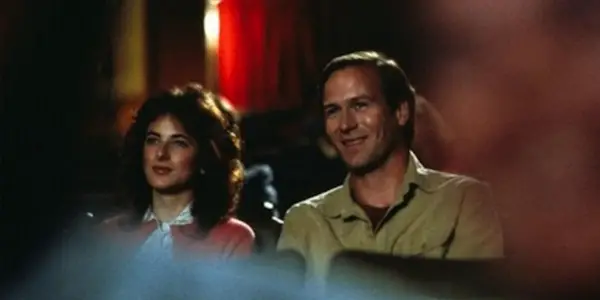
James Leeds (William Hurt) is a new speech teacher at a school for the deaf and hard of hearing in New England. There he meets Sarah Norman (Marlee Martlin), a shy young deaf woman who is working as a cleaner at the school. James attempts to get Sarah to start talking aloud, which pushes the boundaries of her restricted life. Whilst Sarah resists James’ attempts to teach her to use her vocal abilities, a romantic interest develops between the two, which blooms into a full relationship and the two start living together. James’ insistence on Sarah’s vocal training puts a heavy strain on their relationship, which forces each person to question how important it is to themselves and the relationship they have built together.
Based upon a hit Broadway production of the same name, the film acted as the breakthrough feature for prominent deaf actress Marlee Matlin. At 21, she won the Oscar for Best Leading Actress, making her the youngest recipient for the award, a record which remains still today. Children of a Lesser God succeeds in its respectful and authentic depiction of the deaf community, never feeling like the deaf are exploited/presented in a exaggerated fashion to purposefully manipulate the audience’s emotions.
Haines’ confident direction, alongside with Mark Medoff’s intelligent script (the original playwright of the Broadway production, with help from Hesper Anderson) and passionate performances by its leading cast, Children of a Lesser God is one of the more mainstream-friendly entries in this list, a film which has managed to stay well known in this film culture.
6. The Decline of Western Civilization: Part One (1981, Penelope Spheeris)

Before directing Wayne’s World, Penelope Spheeris made her feature-length debut with the controversial documentary series The Decline Of Western Civilisation, with Part One debuting in 1981, Part 2 in 1988 and Part 3 in 1998, each exploring a different extravagant music genre that was emerging at each time. The Decline of Western Civilisation: Part One chronicles the Los Angeles punk music scene circa 1980 that was alive at the time, using a mix of different band interviews, performances and observational footage to really capture the loose and hectic lifestyles of the punk rock scene.
The film gives a rare unbiased (as unbiased as a documentary can be) look into a subculture that was largely ignored by the rock music press of the time, due to its underground presence and extreme nature. Whilst some may argue that the film gives the impression of stereotyping the punk scene and giving them the characterisation of being brain-dead degenerates, removing any sense of the DIY fashion and independent system that drives the music and energy of the scene. Spheeris avoids coming off as totally biased though, as her thorough archive of different footage manages to give enough varied evidence into the destructive nature of the punk scene at the time of shooting, her independent shooting style reflecting the DIY nature of the music she is shooting.
Whilst Penelope Spheeris hasn’t made an acclaimed film lately (which is a shame), Spheeris’ confident independent debut feature triggered a successful film career which frequently slipped between documentary and mainstream movies, with her biggest accomplishment being the first Wayne’s World film. Spheeris commented on how her career shifted after the success of the Wayne’s World film, stating
“I tried like hell to direct movies I had written and books that I wanted to adapt for film. I tried so hard to do something beside television remakes but I couldn’t get anything going. That is where the sexism in the film industry becomes all too apparent. If I was a guy, I swear to God I would have been able to get my own shit going after Wayne’s World.”
7. Vagabond (1985, Agnes Varda)
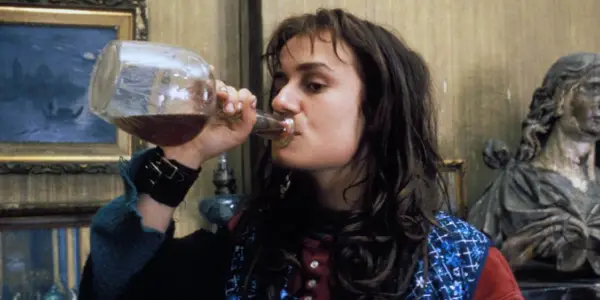
When young drifter Mona (Best Actress César winner Sandrine Bonnaire) is found frozen to death in a ditch, the film explores the vagabond’s life leading up to her tragic death, using a flashback structure similar to that of Citizen Kane (interviewing various people to explore different moments in the titular character’s life). The various characters, played by an array of non-professional actors to give the film a realistic feeling, portray a broad portrait of the solitary woman Mona.
The film is constructed in a puzzle-like structure, using the conventional narrative pieces in a non-linear fashion, mixed in with the pseudo-documentary scenes with the people commenting on Mona, which forces the audience to construct their own chronicle of events by the different components offered by Agnes Varda.
Mona’s experiences throughout her final weeks, with various men and women include squatting in an old house smoking hash with an older man, falls in love with a a Tunisian labourer who she works with, rests with a couple of shepherding goats, meets an agronomist who is trying to save plane trees, gets drunk with an old woman, and is approached by a mysterious man who offers to put her in porn films as an actress.
French Cinematographer Patrick Blossier’s stark cinematography helps capture the desolate situations that Mona frequently finds herself in, bringing to life this representation of a beggar’s life, whilst slightly exaggerated for the cinema, reflects a sad reality who those living the vagabond lifestyle.
[highlighted_text]What are some other female-directed films from the 1980’s that you can recommend? [/highlighted_text]Does content like this matter to you?
Become a Member and support film journalism. Unlock access to all of Film Inquiry`s great articles. Join a community of like-minded readers who are passionate about cinema - get access to our private members Network, give back to independent filmmakers, and more.













